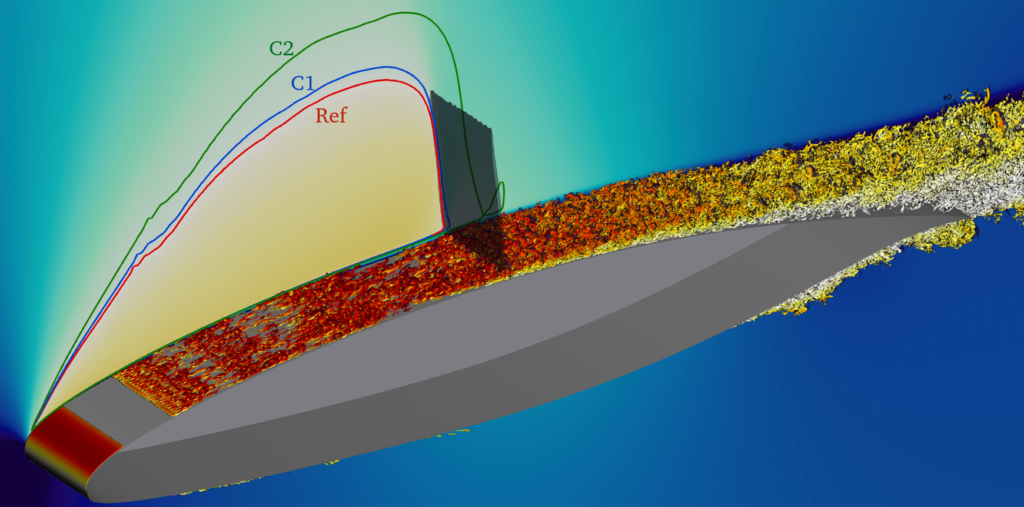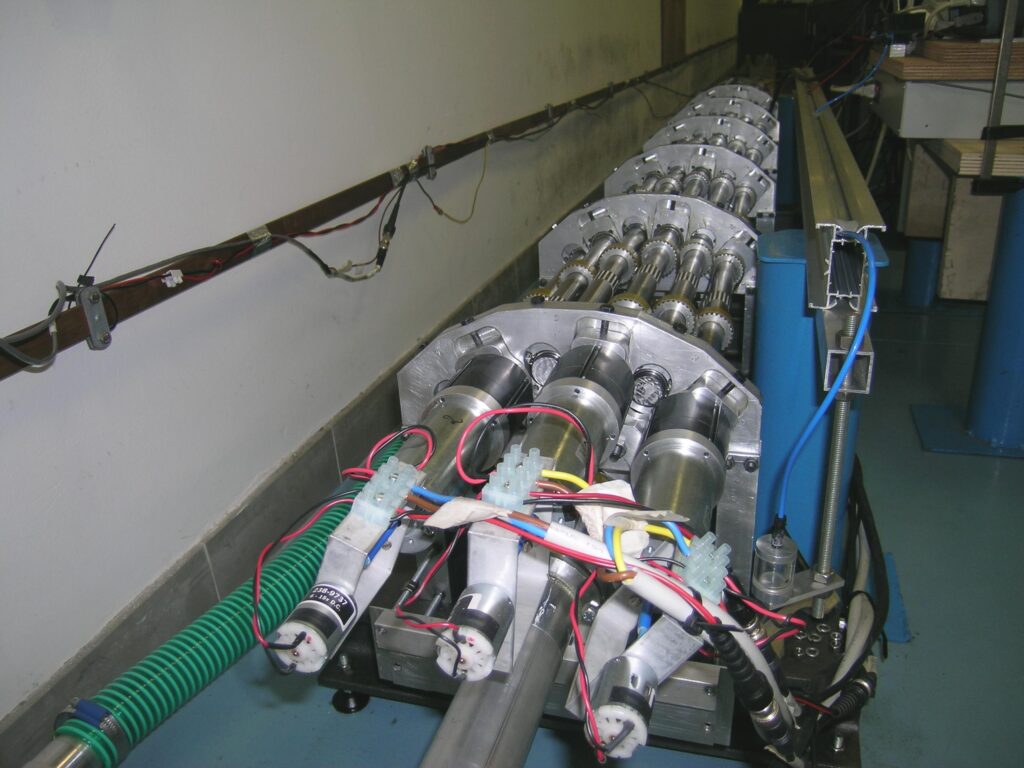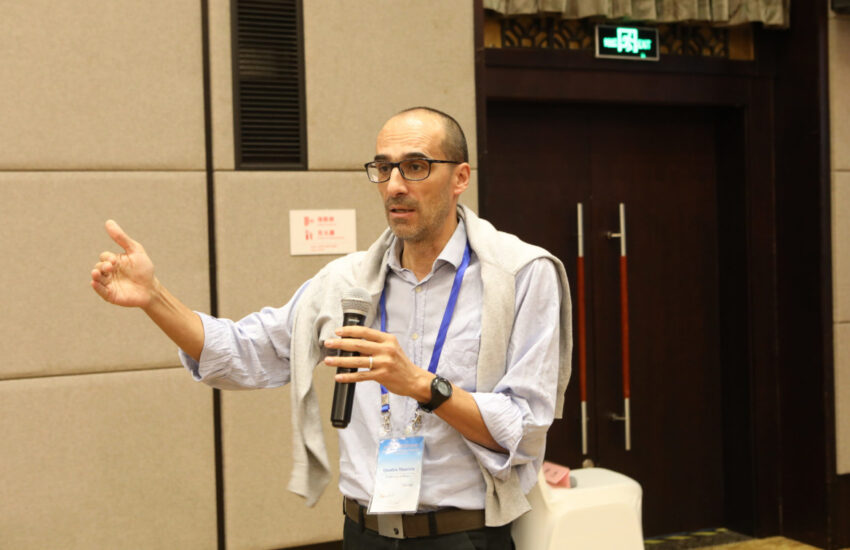We talked to Maurizio Quadrio, PhD, Professor of Fluid Dynamics and Turbulence at the Department of Aerospace Science and Technology and Mercator Fellow at the Karlsruher Institute of Technology.
His research work combines experiments and numerical simulations to study turbulent flows confined by a wall with a special interest in reducing turbulent friction drag. He uses Direct Numerical Simulation (DNS) to develop friction reducing techniques; this is often used as a tool for investigating wall turbulence and a better understanding of the physics involved.
His scientific interests include computational fluid dynamics (CFD), adjoint-based optimization techniques, and the fluid dynamics of the human nose in particular: in this field, thanks to a long-term research project, he applies flow control techniques used in the day-to-day work of ENT surgeons.
How did you start to be interested in turbulence and its applications?
I was young and ingenuous just like many others when I started out and a series of circumstances led me to encounter the problem of turbulence which has fascinated me and enthralled me for the rest of my life. To use a slightly overused quotation by Richard Feynman, turbulence is “the most important unsolved problem of classical physics”. And its solution is still a long way off!
Why is it such a complex matter?
It is an extremely challenging problem from a scientific point of view, but one that has important practical implications. It is one that is studied both in the laboratory and using large scale numerical simulations. It is also one that covers fundamental physics, the dynamics of complex systems and numerous applied problems. It is very important in aeronautics for example: an aeroplane is a machine that “must stay up”, i.e. it must produce a vertical force – lift – and that’s the easy bit. But it must also do that well and offer very low resistance. Low resistance means low emissions, low noise levels, a lot of autonomy and low costs.

How did your research continue after this first encounter with turbulence?
As I continued with my career, I concentrated on flow control where you don’t just have to understand (or at least try and understand) what a turbulent current is, but you go as far as thinking that you can control it and modify it to our advantage.
It is in this field, a few years ago, that we discovered a technique for controlling turbulence called spanwise wall forcing. Spanwise wall forcing has been very successful with the scientific community and has become probably the most researched control technique. We still don’t have actuators which are capable of making it work properly, but it has everything you need: it is simple, robust, has low energy costs, etc. Ten years ago, we also did the first experimental proof of concept which was very successful (it is still unmatched on many levels), with a reduction in turbulent resistance of over 40%. That is a lot.
Summed up in just a few words, this is the first stage of my life as a scientist.

So this was the first stage. And what about the second?
Ah… Here we get to my existential crisis – in a scientific sense – at the age of 45 to 50 …
I was on a sabbatical and was commuting on a weekly basis between Paris and home. Twelve hours travelling twice a week; something that was not good for my health. My chronic sinusitis had also got worse and I finally decided to do something about it. I became friends with the ENT surgeon who operated on me and today we collaborate intensely on research work.
On my first visit – we didn’t know each other at all at this stage – he said: “Ah yes, I’ll do this and that, but don’t ask me why, I’ll just do it. But don’t worry, you will be fine”. And now I am fine.
A truly inspiring visit…
Yes. It was then that I realized that the nose is a wonderful problem of fluid dynamics and surgery can be seen as a form of flow control where the scalpel modifies and optimizes the anatomical forms. It’s not that I have directly applied my flow control technologies here because the nose problem is much more complex than a simple reduction in aerodynamic drag – here the only solution is surgery. But I have applied concepts and knowledge of physics, turbulence, numerical analysis and optimization.
I am in regular contact with a group of 5 or 6 ENT surgeons – that means we have developed a common language. I have also been in the operating theatre to assist and understand. I have learnt how to read their CAT scans and they understand when I talk about Computational Fluid Dynamics, DNS and LES. I have brought numerical simulation into their clinical routine.
What has been missing so far in the common approach to the nose problem?
The nose problem is a problem that not even doctors seem to acknowledge. Of course, today there is endoscopy and you can “see” it. Less invasive endoscopic surgery is performed but everything still depends on the surgeon’s experience. I have selected a group of doctors who are really interested in the subject, this is vitally important. They present me with the problems: this is a different approach from that of other researchers which is often to move in parallel with the clinic. We, on the other hand, are literally in the clinic.
The nose problem may appear to be a minor one: you don’t usually die from a deviated septum or sinusitis. But when I compared my two research fields, my two scientific lives, I realized that the nose problem is much more important than the aeronautics problem: roughly 10 times more with regard to costs without considering all the non-economic aspects.
Consider than one in three people have difficulty breathing through their nose. In septoplasty surgery , that is, correction of a deviated nasal septum, 50% of the operations do not succeed, not 5 in one thousand, but 50%, that’s half! And that is a lot!
There is huge scope for improvement. Every country has its own health system and in some countries, this becomes an issue that regards the insurance companies more than the surgeons, and the things needs to be approached differently. But we have a big problem, it is literally under our very noses [he laughs] and very few people realize it. I came across it by chance over ten years ago. And ten years later, all this hard work is beginning to produce results.
What results? What is your research based on?
The main difference between “my” two fields of research is that, for the aeroplane, we know exactly what we want, we want to reduce drag; for the nose, though, no-one knows. We go to the doctor’s and say we have problems breathing properly. Often the doctor doesn’t know why and is not sure he or she has found the right solution: sometimes, they are wrong and sometimes, surgical corrections are useless or even harmful. What is more, there is no such thing as a “standard” nose: there is a large variety of anatomical shapes with no correlations with the wellbeing of the patient. And as the state of the art would have it, surgeons do their best but …nobody really knows how our noses work!
We have done a lot in ten years in a line of research we call OpenNose. We have created a 1:2 scale model of a human head in transparent silicone, obtained from a CT scan and therefore anatomically faithful as far as the nasal cavities, which have very complex shapes inside, are concerned. This “testone” (Italian for “head”) – or “TestOne” (because it is the first benchmark) – enables us to observe and instantly measure the airflow inside the nasal cavities using particle image laser velocimetry techniques. The idea is to take measurements in a laboratory, combine the experimental data with a refined Direct Numerical Simulation and make it all open source so that we have the first benchmark that is open to the community.
However, only very recently, we have had a sort of turning point which brought us closer to solving the problem. When you understand how things work, it’s plain sailing. Now we have a program that can be used to plan excellent surgery in real time: first results show that it is working very well. This is not because the program is particularly complex but simply because we have understood which objective we should pursue.

What plans do you have for the future?
I would like to close the circle: so far, I have kept my two scientific lives separate, obviously using in the second life what I learnt in the first. But now my ambition is to bring into my scientific community what, in my view, is and will continue to be, the increasingly important role of flow control in the biomedical field.
We are also making, together with a colleague from the DEIB [Department of Electronics, Information and Bioengineering, Editor’s note], Giacomo Boracchi, interesting developments in the use of Machine Learning technologies in the field of fluid dynamics with an original approach in which ML is used to estimate quantities that cannot be calculated, in order to do diagnosis, using computational fluid dynamics results: this would be a result that interests everyone.
What would you say to a young person who wants to study this field?
This is a difficult question but a good one: I have also been very sensitive to the one special person in a thousand who decides to pursue this path which is difficult and full of challenges but also potentially very gratifying.
A young person who embarks on this path will probably see the first results in ten years’ time in a completely different scenario of universities and research. Therefore, today I would advise caution – people should make strategic choices that are not too limiting, not focusing so much on where they want to go, on what they want to study, but on being really, really flexible. We are at the dawn of very radical change and it is hard to predict what will happen in the near future.
This is, without doubt, a fascinating subject. Flow control is a very difficult field, one in which a lot of very good scientists have failed. It is not one of those engineering problems which go ahead through a process of continuity, one piece at a time. Here, you have to invent your own path and invent your own way to achieve it. Either find the right path or open up a new one!
Until now, flow control has remained within the boundaries of aeronautics and engineering in general; from tomorrow, flow control will also be transferred to the biomedical field. The future belongs to those who think outside the box!

